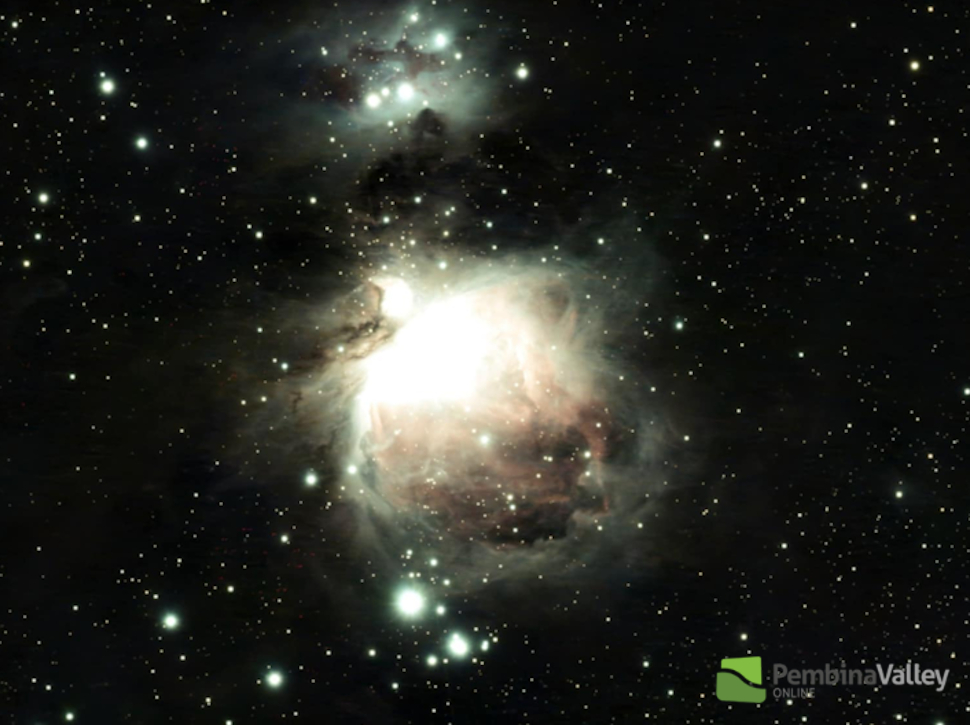A total lunar eclipse is set to grace the night sky late on March 13 into the early hours of March 14, providing a stunning celestial display for skywatchers in the Pembina Valley and beyond.
Kenton Dyck of the Astro Club explains the phenomenon: “We will have the sun, then the Earth, and behind that, the Moon will sling into the shadow of the Earth. That’s what makes it a lunar eclipse.”
Related stories:
- Looking up in style: Donor creates new viewing possibilities for local astronomy
- Local astronomer Kenton Dyck receives royal nod for community influence
When and how to watch
The eclipse will begin at 9:57 p.m. on March 13, gradually darkening the Moon as it moves deeper into Earth’s shadow. The most striking phase, when the Moon turns a deep coppery red, will last for 66 minutes from 12:26 a.m. to 1:31 a.m. on March 14. The entire eclipse will conclude at 4:00 a.m.
“The reason the Moon appears red is because as it passes behind Earth, sunlight filters through our atmosphere. The blue light is scattered away, while red and orange hues bend inward, illuminating the Moon with that distinct blood-red color,” Dyck explains.
Clear skies are currently in the forecast for Thursday night, making for ideal viewing conditions. Dyck suggests venturing outside around midnight for the best view of the Moon’s transformation.
New telescope enhances stargazing experience
Dyck recently introduced a new addition to the Astro Club’s equipment—an 8-inch Dobsonian telescope. “It’s a scaled-down version of our 12-inch model, but I’m really excited about it because it’s much more accessible, including for those in wheelchairs,” he shares.
Despite its smaller size, the telescope benefits from advancements in mirror technology over the past decade. “I was very impressed with the viewing quality—it’s a testament to how much optics have improved,” Dyck says.
Although the telescope would be beneficial to a lunar eclipse viewing, Dyck relates to the many of us who will be sleeping through the eclipse. "Provided the weather's good, this is why I'm extremely excited to have that smart telescope. The plan is to get it all rigged up, and let it record overnight, while I'm sleeping." Dyck hasn't had many chances to test the smart telescope yet, but shared a picture of the Orion nebula as an example of what it can do.

Why do we look up?
The conversation turned to the fascination with space and why people are naturally drawn to the stars. “I think it’s something deeply human,” Dyck reflects. “For much of our existence, we slept outside under the stars. It’s a primal part of us to look up and wonder.”
He also shares a little-known connection between astronomy and medical advancements. “When the Hubble Space Telescope was first launched, its mirrors were ground incorrectly, making its images blurry. Scientists wrote an algorithm to clean up those images, and a medical technologist adapted that same algorithm to help detect cancer cells in mammograms. That technology has been saving lives ever since.”
With stories like these, it’s clear that looking up at the stars not only fills us with wonder but can also lead to groundbreaking discoveries.
For those eager to witness the upcoming eclipse, all that’s needed is a clear sky, warm clothing, and a moment to step outside and take in one of nature’s most breathtaking spectacles.
